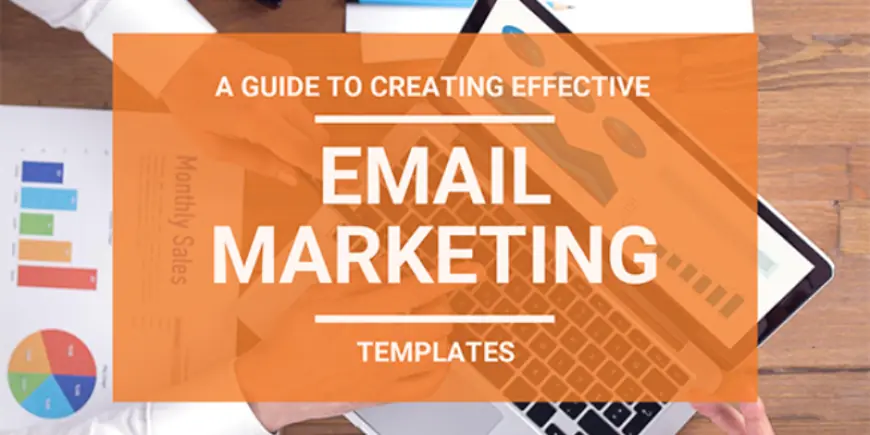How to Design Engaging Email Marketing Templates
Create engaging email marketing templates with compelling design, strong CTAs, and mobile optimization to boost conversions and improve user engagement.

Email marketing remains one of the most effective ways to engage with audiences, drive conversions, and build brand loyalty. However, to stand out in a crowded inbox, businesses must create engaging email marketing templates that capture attention and encourage interaction. A well-designed template enhances readability, strengthens branding, and improves user experience. This blog explores key strategies for designing compelling email marketing templates that drive results. Additionally, businesses can benefit from learning design principles through Graphic Design Courses in Chennai to enhance their email marketing efforts.
Understanding the Importance of Email Templates
Email templates serve as the foundation of an email marketing campaign. They ensure consistency in branding, maintain a professional appearance, and save time in campaign execution. Effective email templates are visually appealing, mobile-friendly, and structured to guide recipients toward a desired action, such as making a purchase, signing up for an event, or reading a blog post.
Key Elements of an Engaging Email Template
To design an engaging email marketing template, consider these essential elements:
1. Compelling Subject Line and Preheader Text
The subject line is the first thing recipients see and plays a critical role in open rates. It should be concise, engaging, and relevant to the content inside. Preheader text, the short summary that follows the subject line, should complement the subject line and entice the reader to open the email.
2. Responsive Design for Mobile Optimization
With more than half of emails being opened on mobile devices, responsive design is essential. Ensure the email template adapts seamlessly to various screen sizes. Use a single-column layout, large font sizes, and touch-friendly buttons to improve the mobile experience.
3. Visually Appealing Layout and Design
Reduced engagement rates might result from receivers feeling overloaded by a crowded email. A clean and structured layout helps enhance readability. Consider the following design principles, as White Space Good for Graphic Design plays a crucial role in making content visually appealing:
-
Use ample white space to create a balanced layout.
-
Implement a visual hierarchy by using headers, subheadings, and bullet points.
-
Choose a limited color palette that aligns with brand identity.
-
Use top-notch pictures and graphics that enhance the message.
4. Consistent Branding Elements
Brand consistency fosters trust and recognition. Ensure the email template includes:
-
A recognizable logo at the top.
-
Brand colors and typography.
-
A signature or sender details for a personalized touch.
5. Engaging and Persuasive Copy
The email content should be clear, concise, and action-oriented. Use engaging language that speaks directly to the recipient. Consider the following:
-
Keep paragraphs short for better readability.
-
Highlight key points with bullet points or bold text.
-
Personalize the message using the recipient’s name or past interactions.
6. Strong Call-to-Action (CTA)
A well-placed CTA guides the recipient toward the desired action. Ensure that:
-
The CTA button stands out with contrasting colors.
-
The message is action-oriented (e.g., "Shop Now," "Download Free Guide," "Register Today").
-
The button is large enough to be easily clicked on both desktop and mobile devices.
7. Interactive Elements for Higher Engagement
Adding interactive elements can make emails more engaging. Consider including:
-
Animated GIFs or subtle motion graphics.
-
Clickable images or carousels.
-
Surveys or polls to gather feedback.
-
Countdown timers for limited-time offers.
Also Check: User Experience in Graphic Design and Why it Matters
Best Practices for Creating High-Converting Email Templates
To maximize the effectiveness of email marketing templates, follow these best practices:
1. Personalization and Segmentation
Sending the same email to every subscriber reduces engagement. Use segmentation to tailor content based on user behavior, demographics, or past interactions. Personalized emails with relevant content are more likely to drive conversions.
2. A/B Testing for Optimization
Testing different elements of the email, such as subject lines, images, CTA placement, and content structure, helps determine what resonates best with the audience. Regular A/B testing leads to continuous improvement and better results.
3. Minimalistic and Accessible Design
Avoid excessive use of text and images that could make the email appear cluttered. Use accessibility-friendly features such as:
-
Alt text for images to assist visually impaired users.
-
A high contrast ratio for readability.
-
Descriptive link text instead of generic phrases like "Click Here."
4. Complying with Email Regulations
Adhering to email marketing regulations ensures better deliverability and avoids spam filters. Follow best practices such as:
-
Including an unsubscribe link.
-
Using a recognizable sender name and email address.
-
Avoiding excessive use of spam-triggering words like "Free" or "Urgent."
5. Testing Across Devices and Email Clients
Before sending out an email campaign, test how the email appears on different devices and email clients (e.g., Gmail, Outlook, Apple Mail). This ensures the template looks and functions as intended. For businesses looking to enhance their email marketing skills, a Training Institute in Chennai can provide valuable insights and expertise.
Designing an engaging email marketing template requires a balance of aesthetics, functionality, and personalization. By incorporating visually appealing design, clear messaging, strong CTAs, and mobile optimization, businesses can enhance user engagement and drive conversions. A well-crafted email template not only reinforces brand identity but also ensures a seamless experience for recipients, increasing the likelihood of achieving marketing goals. Implementing these strategies will help businesses create compelling email campaigns that captivate audiences and boost success.












